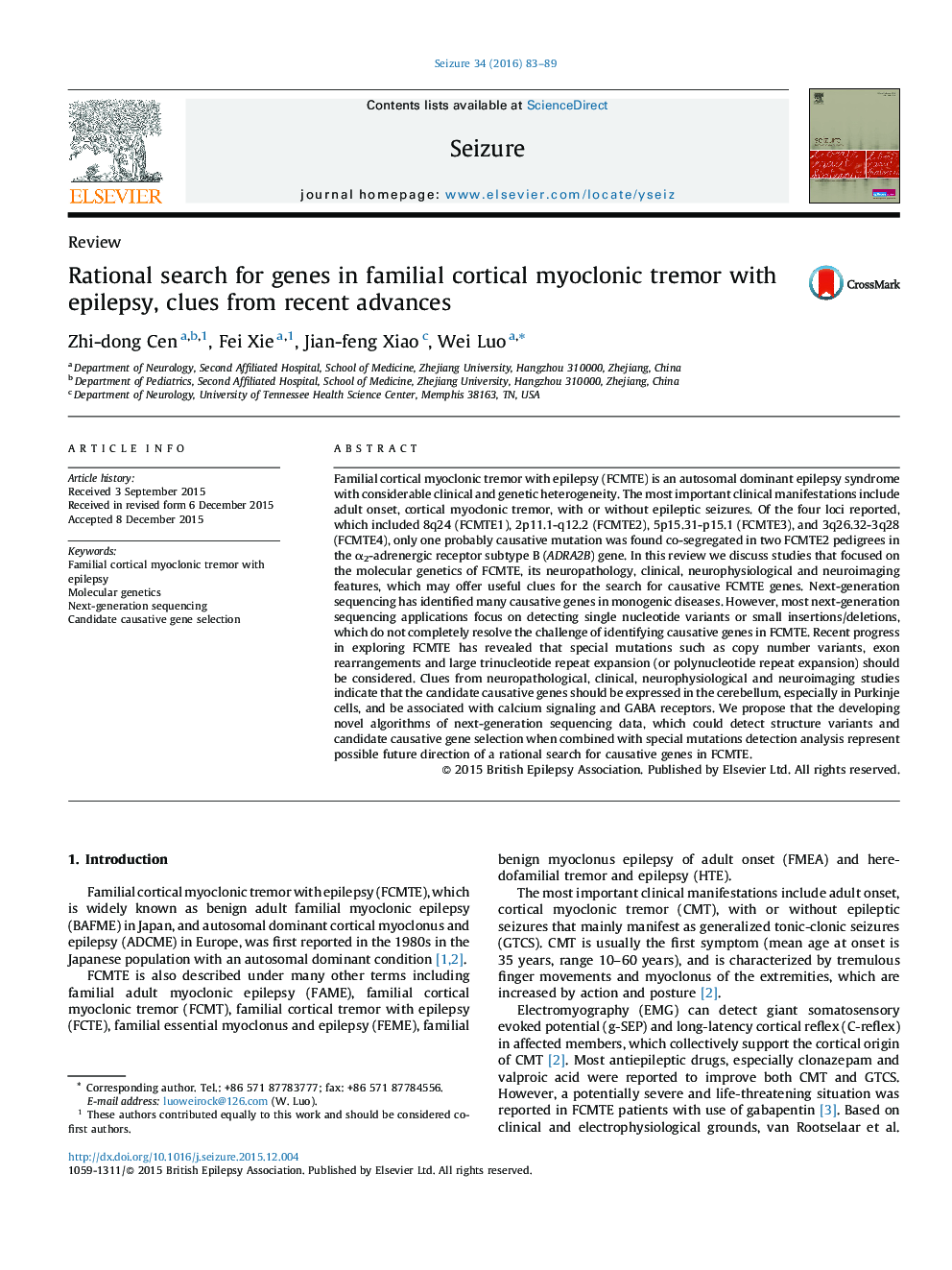| کد مقاله | کد نشریه | سال انتشار | مقاله انگلیسی | نسخه تمام متن |
|---|---|---|---|---|
| 340501 | 548319 | 2016 | 7 صفحه PDF | دانلود رایگان |
• FCMTE is a genetic epilepsy syndrome whose causative genes need further identification.
• Special mutations such as CNVs, exon rearrangements should be considered in FCMTE.
• Candidate genes should be expressed in the cerebellum, especially in Purkinje cells.
• Candidate genes should be associated with calcium signaling and GABA receptors.
Familial cortical myoclonic tremor with epilepsy (FCMTE) is an autosomal dominant epilepsy syndrome with considerable clinical and genetic heterogeneity. The most important clinical manifestations include adult onset, cortical myoclonic tremor, with or without epileptic seizures. Of the four loci reported, which included 8q24 (FCMTE1), 2p11.1-q12.2 (FCMTE2), 5p15.31-p15.1 (FCMTE3), and 3q26.32-3q28 (FCMTE4), only one probably causative mutation was found co-segregated in two FCMTE2 pedigrees in the α2-adrenergic receptor subtype B (ADRA2B) gene. In this review we discuss studies that focused on the molecular genetics of FCMTE, its neuropathology, clinical, neurophysiological and neuroimaging features, which may offer useful clues for the search for causative FCMTE genes. Next-generation sequencing has identified many causative genes in monogenic diseases. However, most next-generation sequencing applications focus on detecting single nucleotide variants or small insertions/deletions, which do not completely resolve the challenge of identifying causative genes in FCMTE. Recent progress in exploring FCMTE has revealed that special mutations such as copy number variants, exon rearrangements and large trinucleotide repeat expansion (or polynucleotide repeat expansion) should be considered. Clues from neuropathological, clinical, neurophysiological and neuroimaging studies indicate that the candidate causative genes should be expressed in the cerebellum, especially in Purkinje cells, and be associated with calcium signaling and GABA receptors. We propose that the developing novel algorithms of next-generation sequencing data, which could detect structure variants and candidate causative gene selection when combined with special mutations detection analysis represent possible future direction of a rational search for causative genes in FCMTE.
Journal: Seizure - Volume 34, January 2016, Pages 83–89
